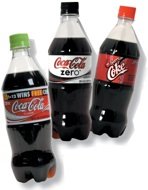 This week I conducted a small experiment. I really want to play my part to reduce emissions, so I’m in the market for a plug-in hybrid electric vehicle (PHEV). I’ve also been doing a couple of papers at our local university for interest recently and have just completed a marketing course at Masters level. So I’m up to speed with marketing tactics and sneaky selling strategies. This is where the fun begins.
This week I conducted a small experiment. I really want to play my part to reduce emissions, so I’m in the market for a plug-in hybrid electric vehicle (PHEV). I’ve also been doing a couple of papers at our local university for interest recently and have just completed a marketing course at Masters level. So I’m up to speed with marketing tactics and sneaky selling strategies. This is where the fun begins.
I headed into town to work my way around a few car sales yards – just to see how I would be treated as a potential customer. Here’s what I found.
1. KIA – The receptionist introduced me to a very young salesman who looked like he had better things to do. I asked if he could take me out for a short drive and introduce me to the vehicle I was interested in. No, that was not possible. But please sign this $5,000 waiver and feel free to take her out for a spin yourself. I asked a basic question about whether the vehicle had anti-skid. He said he needed to go check on this. Really? Aren’t you selling these vehicles? I was also informed there was a 6 month waiting list. Slightly bemused, I signed my life away. After a 2 minute familiarisation, he left me to it. 5/10
2. Subaru – Bubbly young lady waltzed up to me. Very positive attitude, but admits that Subaru do not offer what I seek and not likely to in the future (they do in the U.S.). Things got better though. She asked if I’d considered a Peugeot. I had not. Her colleague under the same roof looked after the franchise, so she kindly took me over and introduced me to him. 7/10
3. Peugeot – We had a good discussion about European vehicles and the sales chap mentioned that he would have a demonstrator vehicle arriving next month that would fit my needs. He gave me a business card and showed me where to find useful info on their website. At all times he showed an interest in the customer needs and was looking to find a solution for me. Not bad. 8/10
4. Hyundai – I currently drive a Hyundai. It has been a wonderful vehicle with minimal running costs. I also love that Hyundai is sponsoring the Pinnacle Programme that offers scholarship opportunities to high achieving students. The current television campaign is the best ad on tv in my humble opinion. I dearly want to love Hyundai – but they keep disappointing. At last year’s service, the car groomer conspired with a rude receptionist to turn the stereo volume to maximum, resulting in an ear blasting when I turned the key. Funny joke. So it was with some trepidation that I set foot on their car yard. I need not have worried. The salesman completely ignored me whilst having an animated discussion on his mobile phone. 1/10
My point is this. There was a time when sales people knew their products and they knew the art of converting leads into actual sales. As a customer, I want to feel valued and respected, no matter where I am in the pipeline. From walk-in to first sale to post-sale service. Sales people used to build lifelong relationships with customers who would often return for their next purchase. What went wrong? Attention deficit?
I’m not sure if this is a localised cultural problem, but service ethic no longer seems to be part of our business DNA here in New Zealand. I’ve lost count of the number of times I’ve walked into a shop or cafe this year where the young staff were either chatting amongst themselves or texting their friends on phones whilst completely ignoring customers. Since when has this ever been acceptable? It reflects badly on business owners who are failing to train teams in customer service and also failing to monitor performance. At a time when businesses are desperately trying to recover from sales lost during the pandemic – why are sellers failing at that most fundamental task called customer service?
Oh… and I still haven’t found my PHEV. Any suggestions?
Paul Spence is a commentator and serial entrepreneur, a recently exited co-founder of a New Zealand based technology venture, a co-founder and director of Creative Forest, principal at GeniusNet Research and an advisor at ThincLab. You can follow Paul on Twitter @GeniusNet or sign up for a free weekly digest of startup, tech and innovation related events curated by him through New Zealand Startup Digest.


